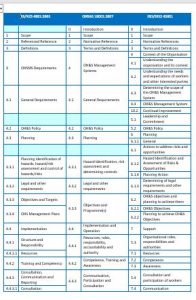 I have written before about the use of Broken Windows theory in an occupational health and safety context. Earlier this year another OHS professional, Bryan McWhorter, wrote about his success in following this approach.
I have written before about the use of Broken Windows theory in an occupational health and safety context. Earlier this year another OHS professional, Bryan McWhorter, wrote about his success in following this approach.
One advantage of talking about this theory is that it applies a concept from outside the OHS field to affect worker and manager behaviours. A safety professional can use the theory’s origin story to show a different approach to safety management. It allows a rationalisation for enforcing safety on those “long hanging” hazards. Continue reading “Broken Windows seems to work”

 Following yesterday’s article on the impending international occupational health and safety (OHS) management Standard, ISO45001, some readers have asked for more details.
Following yesterday’s article on the impending international occupational health and safety (OHS) management Standard, ISO45001, some readers have asked for more details.  The most
The most  The community and media responses to the
The community and media responses to the  Occupational health and safety (OHS) is increasingly being touted as an integral part of a company’s organisational culture. Sometime this is described as a workplace, or safety, culture. If OHS is to be considered thus, it is important to understand other cultural perspectives. One of the most prominent in Australia, at the moment, is the culture of the banking sector.
Occupational health and safety (OHS) is increasingly being touted as an integral part of a company’s organisational culture. Sometime this is described as a workplace, or safety, culture. If OHS is to be considered thus, it is important to understand other cultural perspectives. One of the most prominent in Australia, at the moment, is the culture of the banking sector.  There is much general discussion about the
There is much general discussion about the